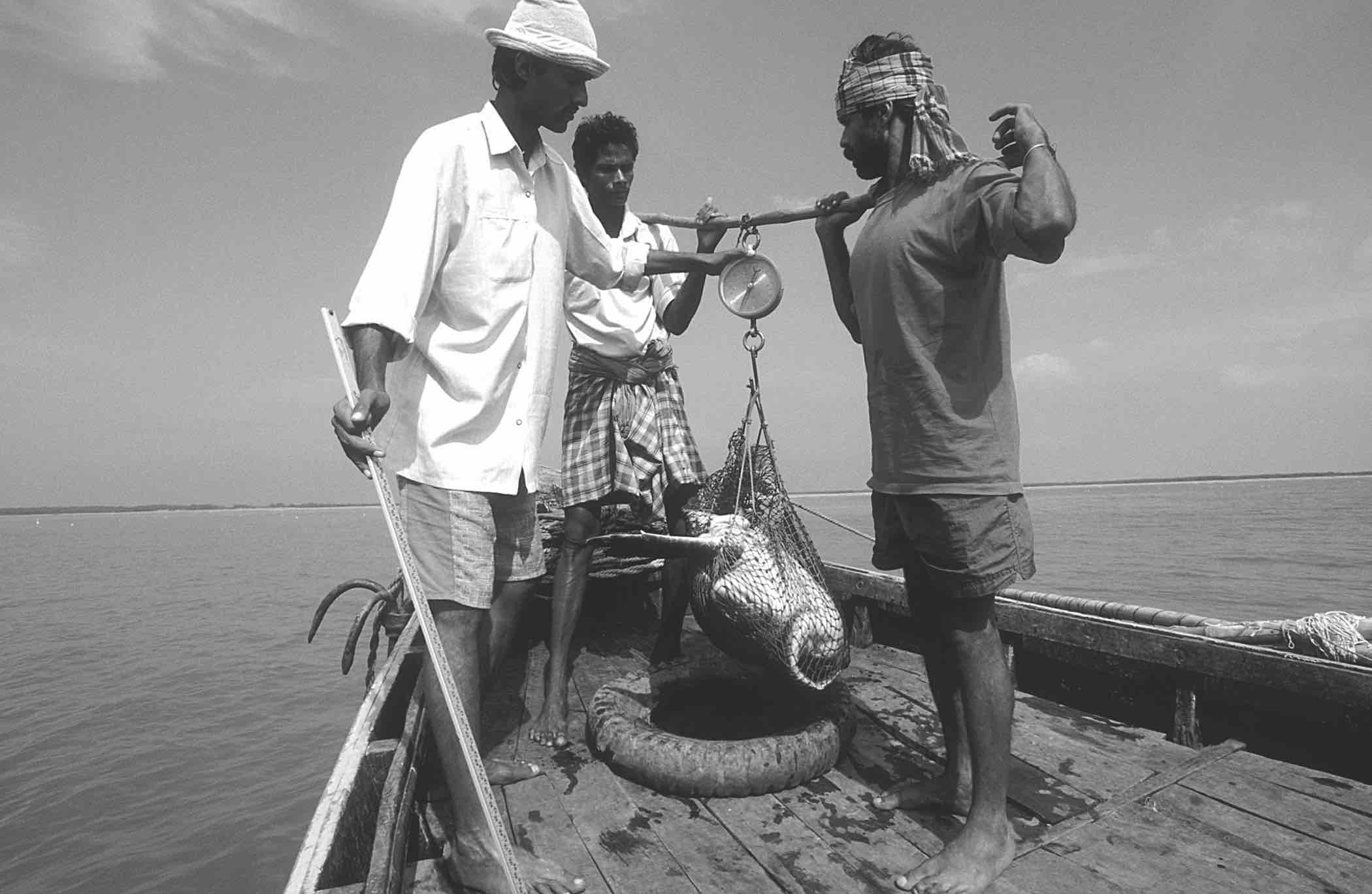Gahirmatha: The Beach beyond the Forest
A field team weighs an olive ridley in Gahirmatha, state of Orissa, India. © Bivash Pandav
By KARTIK SHANKER
Late one afternoon in India, we crossed from Gahirmatha Beach to a small sandbar no more than 1 kilometer (0.6 mile) long and 100 meters (328.1 feet) across. Climbing over the dune, we were greeted by the sight of several thousand olive ridleys—carapaces awash in the afternoon glow—engrossed in a nesting ritual they had been performing for millions of years.
This beach was first noticed in 1974, when Robert Bustard visited the mangrove forests of Bhitarkanika—in Orissa on the east coast of India—in search of saltwater crocodiles. In passing, he heard of a beach where thousands of turtles arrived each winter. The following year, he returned with a group of young and enthusiastic biologists. Every night, they walked up and down a beach carpeted with ridleys, lantern in one hand and paintbrush in another, marking each turtle. They counted 150,000 turtles in just a few nights. Some of the biologists became besotted with sea turtles; others were traumatized and swore off turtles for life.
Bustard announced to the world that they had discovered the world’s largest rookery, signaling the beginning of sea turtle biology and conservation in Orissa. However, Bustard and his young Indian students were not, by far, the first to visit. Local communities had used the eggs for decades, if not centuries. They had paid revenues to the local landlord and the government to collect the eggs for use as cattle feed. Even earlier, in 1708, Captain Alexander Hamilton, traveling between Japan and the Cape of Good Hope, South Africa, had reported—in his book A New Account of the East Indies—that “[b]etween Cunnaca and Balasore Rivers there is one continuous Sandy Bay, where prodigious Number of Sea Tortoises resort to lay their Eggs.…”
Sadly, the rookeries in Orissa are better known today as mass graveyards, with thousands of dead turtles washed ashore each year after drowning in fishing nets. Coastal development and ports threaten the beaches and the turtles. Conservation in Orissa has had its ups and downs, and conservationists and local communities continue fighting to preserve this extraordinary phenomenon as part of their natural heritage.
This article originally appeared in SWOT Report, vol. 5 (2010). Click here to download the entire article as a PDF.

